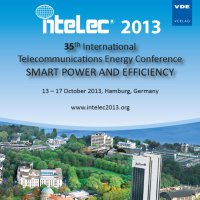On the Performance of Voltage Source Converters based on Silicon Carbide Technology
Conference: Intelec 2013 - 35th International Telecommunications Energy Conference, SMART POWER AND EFFICIENCY
10/13/2013 - 10/17/2013 at Hamburg, Deutschland
Proceedings: Intelec 2013
Pages: 6Language: englishTyp: PDF
Personal VDE Members are entitled to a 10% discount on this title
Authors:
Jahdi, Saeed; Alatise, Olayiwola; Mawby, Phil (University of Warwick, Coventry, UK)
Abstract:
The energy conversion efficiency of voltage source converters based on 1.2 kV silicon carbide MOSFETs and Schottky diodes have been assessed by device measurements and converter simulations. A similar measurement and simulation study has also been performed on a similarly rated 1.2 kV silicon IGBT and PiN diode pair. Transistor to diode current commutation measurements have been performed in a clamped inductive switching test rig for a temperature range between -75°C to 175°C. The measurements have also been performed with different switching rates modulated by a range of gate resistances between 10Omega to 1000Omega. The measurements show that the switching energy of the SiC MOSFETs/SBD pair generally exhibits a negative temperature coefficient whereas that of the silicon IGBT/PiN diode pair exhibits a positive temperature coefficient. Furthermore, the switching energy of the SiC devices are 80% lower than the silicon bipolar technologies. The measurements have been used as inputs into the simulation of a 3 phase, 3-level neutral point clamped voltage source converter. Results from the converter simulations show that the SiC NPC-VSC exhibits 5% higher energy conversion efficiency, 3% less THD and 500% higher maximum switching frequency on average.


